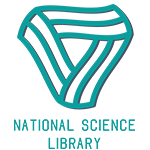Please use this identifier to cite or link to this item:
https://openscience.ge/handle/1/1466| DC Field | Value | Language |
|---|---|---|
| dc.contributor.advisor | კოშორიძე, ნანა | ka |
| dc.contributor.author | სირბილაძე, მარიამ | ka |
| dc.date.accessioned | 2020-01-17T11:44:18Z | - |
| dc.date.available | 2020-01-17T11:44:18Z | - |
| dc.date.issued | 2019 | - |
| dc.identifier.uri | https://openscience.ge/handle/1/1466 | - |
| dc.description.abstract | Stress is considered as a global problem of modernity. The study of biochemical and physiological mechanisms underlying the stress is crucial for life sciences. Stress stimulates physiological and adaptive responses of the body that restores homeostasis. Furthermore, it is noteworthy that prolonged exposure of stress affects general health condition of the organism. Physiological processes in the cells occurring during the stress usually induce biochemical changes, that are reflected by the modification of the hormonal status and signaling molecules activity, that leads to decrease in general status of energy metabolism as antioxidant scavenging status is downregulated. Stress eventually causes depression and a number of neurodegenerative diseases. The central nervous system and specifically brain are especially vulnerable to these processes. Hence, it is important to investigate substances that can be implemented in stress prevention. In this regard, Creatine has attracted our attention because of its antioxidant stimulating properties. Recent study describes the impact of intraperitoneal injection of creatine (140 mg/kg) in rats with disturbed natural circadian rhythm for an extended period of 30 days. Markedly, creatine-treated animals show positive changes in open-field behavioral studies and an increase in activity of certain antioxidant enzymes (SOD, Catalase) in the hippocampus, whereas the concentration of nitric oxide, H2O2, and Ca2+ ions are approximated to the control value. Similar findings have also been observed in case of Na+/K+-and Ca2+-ATP-ases. Considering the obtained results, the reason for upregulated activity of antioxidant enzymes in hippocampal cells of stressed mice may be involvement of administrated creatine in cell energy metabolism and activation of intracellular signaling pathways, followed by enhancement of anabolic reactions, including increased synthesis of enzymes involved in antioxidant system. | en |
| dc.description.abstract | სტრესი დღესდღეობით თანამედროვე გლობალურ პრობლემას წარმოადგენს. მისი მოქმედების ბიოქიმიური და ფიზიოლოგიური მექანიზმების შესწავლა მეცნიერების ერთ-ერთი აქტუალური საკითხია. სტრესი განაპირობებს ორგანიზმის ფიზიოლოგიურ და ადაპტაციურ პასუხებს, რომლებიც აღადგენენ ჰომეოსტაზს. ამასთანავე აღსანიშნავია ის ფაქტი რომ სტრესფაქტორბის გახანგრძლივებული ზემოქმედება უარყოფითად აისახება ორგანიზმის ჯანმრთელობის მდგომარეობაზე. სტრესის ფონზე უჯრედში მიმდინარე ფიზიოლოგიურ პროცესებს ბიოქიმიური ცვლილებები წარმოადგენს, რაც აისახება ორგანიზმის ჰორმონალური სტატუსის და სასიგნალო მოლეკულების რაოდენობირივი ცვლილებით, ენერგეტიკული მეტაბოლიზმის რღვევით, ორგანიზმის ანტიოქსიდანტური სტატუსის დაქვეითებით. სტრესი საბოლოო ჯამში იწვევს დეპრესიებს და მთელ რიგ ნეიროდეგენერაციულ დაავადებებს. ამ პროცესების მიმართ განსაკუთრებით მგრძნობიარეა თვის ტვინი. დღეს აქტუალურია ისეთი ნივთიერებების მოძიება რომელთაც შეუძლიათ მოახდინონ სტრესული მდგომარეობის პრევენცია. ამ მხრივ ჩვენი ყურადღება მიიქცია კრეატინმა,რომელსაც გააჩნია ანტიოქსიდანტური თვისებები. შესწავლილია კრეატინის პროტექტორული გავლენა დღე-ღამური ციკლის ხანგრძლივი დარღვევით გამოწვეულ ცვლილებებზე თეთრი ვირთაგვას ჰიპოკამპის უჯრედებში. ნანახია, რომ ვირთაგვას ორგანიზმში 140მგ/კგ კრეატინის 30-დღიანი ყოველდღიური შეყვანა აუმჯობესებს დღე-ღამური რიტმის დარღვევით გამოწვეული სტრესის შედეგად გაუარესებულ როგორც ფიზიოლოგიურ მახასიათებლებს, ასევე ზოგიერთ ბიოქიმიურ მაჩვენებელსაც. კერძოდ, ადგილი აქვს სტრესის შედეგად გაზრდილი აზოტის ჟანგის, H2O2 და Ca2+-ის იონის რაოდენობრივ შემცირებას. ამის პარალელურად, აღინიშნება დაქვეითებული ანტიოქსიდანტური სისტემის ფერმენტების, კერძოდ სოდ-ისა და კატალაზას აქტივობის მატებაც. მიღებული შედეგების გათვალისწინებით, გამოთქმულია ვარაუდი, რომ კრეატინის შეყვანისას სტრესირებული ვირთაგების ჰიპოკამპის უჯრედებში ანტიოქსიდანტური ფერმენტების აქტივობის მატების მიზეზი შესაძლებელია იყოს მისი მონაწილეობით უჯრედის ენერგეტიკული მეტაბოლიზმისა და ზოგიერთი უჯრედშიდა სასიგნალო გზების გააქტივება, რასაც მოსდევს სინთეზური რეაქციების, მათ შორის ანტიოქსიდანტური ფერმენტების რაოდენობის მატებაც. | ka |
| dc.language.iso | ka | en |
| dc.publisher | Ivane Javakhishvili Tbilisi State University | en |
| dc.publisher | ივანე ჯავახიშვილის სახელობის თბილისის სახელმწიფო უნივერსიტეტი | ka |
| dc.subject | სტრესი და ანტიოქსიდანტური სისტემა | ka |
| dc.subject | კრეატინი | ka |
| dc.subject | კატალაზას აქტივობის განსაზღვრა | ka |
| dc.title | ცირკადული რიტმის დარღვევით გამოწვეული სტრესის პირობებში კრეატინის პროტექტორული მოქმედების შესწავლა თავის ტვინის ანტიოქსიდანტური სისტემის მაგალითზე | ka |
| dc.type | master thesis | en |
| dc.type | სამაგისტრო ნაშრომი | ka |
| thesis.degree.name | ბიოლოგიის მაგისტრი (ბიომრავალფეროვნება, ბიოქიმია; ნეირომეცნიერებები; განვითარების ბიოლოგია; მცენარეთა ფიზიოლოგია; მიკრობიოლოგია; იმუნოლოგია; უჯრედული ბიოლოგია, მოლეკულური ბიოლოგია; გენეტიკა; ბიოფიზიკა). MSc in Biology (Biodiversity; Biochemistry; Neurosciences, Developmental Biology; Plant Physiology, Microbiology; Imunology; Cellular biology; Molecular Biology; Genetics, Biophysics) | ka |
| thesis.degree.level | 1 | - |
| thesis.degree.discipline | ბიოლოგია. Biology | ka |
| dc.contributor.institution | Ivane Javakhishvili Tbilisi State University | en |
| dc.contributor.institution | ივანე ჯავახიშვილის სახელობის თბილისის სახელმწიფო უნივერსიტეტი | ka |
| dc.contributor.faculty | Faculty of Exact and Natural Sciences | en |
| dc.contributor.faculty | ზუსტ და საბუნებისმეტყველო მეცნიერებათა ფაკულტეტი | ka |
| item.languageiso639-1 | ka | - |
| item.cerifentitytype | Publications | - |
| item.cerifentitytype | Publications | - |
| item.openairecristype | http://purl.org/coar/resource_type/c_bdcc | - |
| item.openairecristype | http://purl.org/coar/resource_type/c_18cf | - |
| item.openairetype | master thesis | - |
| item.openairetype | სამაგისტრო ნაშრომი | - |
| item.grantfulltext | open | - |
| item.fulltext | With Fulltext | - |
| Appears in Collections: | ზუსტ და საბუნებისმეტყველო მეცნიერებათა ფაკულტეტი (დისერტაციები, სამაგისტრო ნაშრომები) | |
Files in This Item:
| File | Description | Size | Format | |
|---|---|---|---|---|
| MA Thesis Sirbiladze Mariami.pdf | ცირკადული რიტმის დარღვევით გამოწვეული სტრესის პირობებში კრეატინის პროტექტორული მოქმედების შესწავლა თავის ტვინის ანტიოქსიდანტური სისტემის მაგალითზე | 858.26 kB | Adobe PDF | View/Open |
CORE Recommender
Google ScholarTM
Check
Items in DSpace are protected by copyright, with all rights reserved, unless otherwise indicated.

